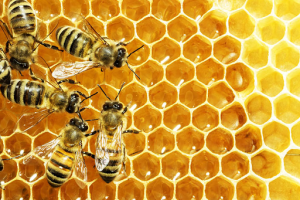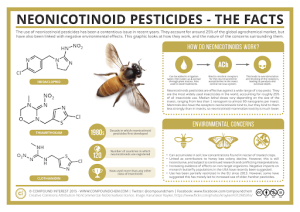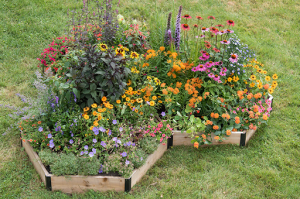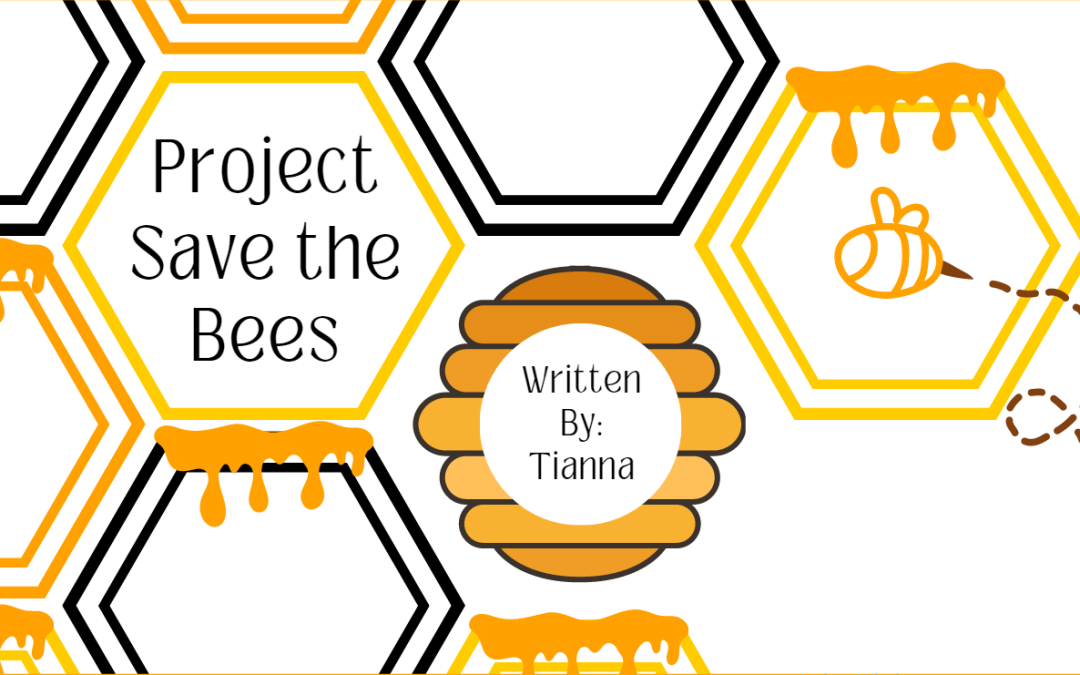Written By: Tianna
Edited By: Morgan Pankarican
Designed By: Tvisha Lakhani
Published By: Miriam Alonge Wato
Spring is around the corner and flowers are blooming, which means bees are buzzing!

With over 850 different species of bees in Canada, they play an essential role in keeping our ecosystems thriving. Bees support the growth of trees, flowers, crops, and other plants. Additionally, they aid in pollinating the crops we know and love. Without bees, we wouldn’t have things such as apples, cranberries, asparagus, melons, and more! Not only do bees help with edible crops, they also facilitate wild plant growth. Bees are responsible for providing food for humans and wildlife alike. As more bee populations start to decrease, we run the risk of losing these essential foods and plants.
Sadly, the population of bees has been dropping significantly over the past few years and it is up to us to reverse this. In 2022 beekeepers across Ontario reported losses of up to 90% in their colonies, which shows how urgent this matter is even today.
Bee populations decrease yearly for a number of reasons. Some of these are natural causes which can occur due to bees not surviving the cold winters, but many reasons are due to human error. Pesticides, insecticides, habitat loss, and climate change are just a handful of factors that are contributing to the severe loss in bees every single year.
Neonicotinoids are neuro-active insecticides that are used on crops all around the world, including Canada. Neonicotinoids are used on farms and urban landscapes to kill pests. The effects of Neonicotinoids kill essential pollinators such as bees and butterflies, along with other wildlife as they permanently bind to the nerve cells of insects, overstimulating and killing them. Due to the fact that neonics are absorbed by the soil, they remain in plant life, water, and soil for years, and can spread due to rain and irrigation. Pesticides and insecticides such as neonics are detrimental to our wildlife and pollinators.

Climate change is also a severe factor that is resulting in the decreasing numbers of bees. Due to the change in temperatures, bees may not be able to survive winters like they used to, and severe weather can destroy essential habitats.
Although there are so many things we are doing that are working against the bees, there is a lot we can do to help the bees. Building a pollinator garden is one of the easiest ways you as an individual can help the bees. Pollinator gardens are a mix of different plants that attract local pollinators and wildlife. You can start making one by including a diverse range of woody and soft stemmed plants, this will allow for a range of wildlife attracted to your garden. Next, leaving natural debris such as dead stems and dried leaves provide habitat for wildlife, and aids in overwintering insects. Planting flowers in varying height and colour also allows bees and other pollinators to see your garden from far away and fly to it. Sunflowers act as a beacon for pollinators as bees are attracted to colours such as blue, purple, white, and yellow! Pick plants that are native to your area, this will allow for them to thrive without needing a lot of care. Native plants are also favoured by your local wild bees.

Another way to help your local pollinators tribe is to stop the use of pesticides in your garden if you currently use some. We need our insects and wildlife in order to keep the plant life we know and love. Yes, sometimes those pesky bugs eat lettuce leaves, and get into fruits and vegetables you try so hard to grow, but it is not worth poisoning them over. There are many natural ways you can deter these bugs from your garden, without harming anything in the process.
If you can, you can also support pollinator protection initiatives and nonprofits. It is not just up to you to save the bees, it is a group effort! By supporting places such as the Pollinator Partnership, the Xerces Society for Invertebrate Conservation, and many others, you can volunteer or donate to help save local pollinators.
These are just a few ways that will greatly help the bees. Consider these as spring is here and summer is approaching. The bees need us! It is time to step up and help them just as they help us every single day. Without the bees we would have nothing.
Works Cited
Cox, Diana, and Gloria DeGrandi. “Tellus | Bolstering Bees in a Changing Climate | USDA-ARS.” USDA – ARS : Tellus, https://tellus.ars.usda.gov/stories/articles/bolstering-bees-in-a-changing-climate/. Accessed 19 April 2023.
“Effects of Neonicotinoids on Humans and Bees.” NRDC, 25 May 2022, https://www.nrdc.org/stories/neonicotinoids-101-effects-humans-and-bees. Accessed 19 April 2023.
“Home.” YouTube, https://davidsuzuki.org/living-green/how-to-attract-pollinators/?gclid=Cj0KCQjwocShBhCOARIsAFVYq0j3-K-45huU4lfpUBE7qy2Ya0gkSGlRHkEHFBNv_tE3gR9q1hb87okaAi4JEALw_wcB. Accessed 19 April 2023.
“How Neonicotinoids Can Kill Bees.” Xerces Society, https://xerces.org/publications/scientific-reports/how-neonicotinoids-can-kill-bees. Accessed 19 April 2023.
“Neonicotinoids in Canada.” Canada.ca, 29 June 2021, https://www.canada.ca/en/health-canada/services/consumer-product-safety/reports-publications/pesticides-pest-management/fact-sheets-other-resources/neonicotinoids-in-canada.html. Accessed 19 April 2023.
“Save the Bees.” Greenpeace, https://www.greenpeace.org/usa/sustainable-agriculture/save-the-bees/. Accessed 19 April 2023.

